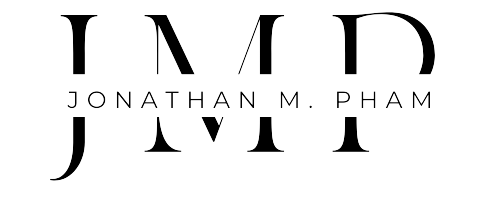The DISC model is an amazing tool to understand different personality styles, improve communication, and build stronger relationships.
Have you ever wondered why some people seem so easy to connect with while others leave you feeling frustrated and confused? The DISC Model offers a powerful framework for understanding the nuances of human behavior. It’s not about labeling people, but rather gaining insights into their communication styles, motivations, and preferred work environments.
What is the DISC Model?
DISC is a widely used personality assessment tool that sheds light into human behavior. Developed by psychologist William Moulton Marston in the 1920s, the model is based on the idea that individuals interact with the world in distinct ways, with some naturally inclined towards risk-taking while others favor more cautious approaches.
The DISC assessment measures tendencies across four primary personality styles: Dominance, Influence, Steadiness, and Conscientiousness. Each of these dimensions is associated with unique strengths and potential challenges. For instance, those with a Dominant (D) personality tend to be assertive, results-oriented, and decisive. However, this assertiveness may sometimes be perceived as overly demanding or aggressive.
How Does the DISC Model Work?
The DISC assessment focuses specifically on behavioral tendencies and communication styles. It’s important to note that it does not measure intelligence (IQ), emotional intelligence (EQ), aptitude, mental health, or values. Instead, it provides insights into how a person is likely to behave in various situations.
A DISC profile describes an individual’s behavioral patterns, revealing how they typically respond to challenges, how they influence and persuade others, their preferred work pace, and their adherence to rules and procedures. Based on it, individuals may cultivate self-awareness, recognizing their own strengths, preferences, and potential blind spots. This self-knowledge can then be leveraged to improve communication, collaboration, and overall effectiveness in both personal and professional settings.

Read more: Self-leadership – The Art of Leading from Within
4 Personality Types in the DISC Model
Dominance (D)
What’s the point of playing if winning isn’t the goal?
J.D. Robb
Individuals with a Dominant (D) personality are typically decisive, results-oriented, and assertive. They tend to be natural leaders, comfortable taking risks and making quick decisions. Their drive and focus on achieving goals often proves to be a valuable asset, particularly in fast-paced or demanding environments. They excel at taking charge and motivating others to achieve objectives, which makes them well-suited for roles requiring strong leadership and project management skills.
D-style people are sometimes perceived as impatient, demanding, or even aggressive. Their direct communication style, while efficient, may occasionally come across as insensitive or tactless. It’s important to remember, though, that this directness is often driven by a desire to maximize efficiency and achieve results, rather than any intention to be hurtful.

Common traits:
- Decisive
- Results-oriented
- Assertive
- Direct communicators
- Risk-takers
- Natural leaders
- Can be perceived as impatient or demanding
How to work with a D Style:
- Be direct and to the point.
- Focus on results and outcomes.
- Support your ideas with data.
- Avoid being overly emotional or passive.
- Respect their time and be well-prepared.
Suitable careers:
D-style personalities thrive in roles that offer autonomy, challenge, and the opportunity to lead and influence others. For example:
- CEO/Executive Leadership
- Sales Management
- Project Management
- Entrepreneur
- Military Officer
- Business Owner
- Consultant
Influence
Whoever is happy will make others happy too.
Anne Frank
Individuals with the Influence (I) personality are typically enthusiastic, optimistic, and outgoing. They are natural communicators, often described as charismatic and persuasive. They thrive in social settings, enjoy networking, and are generally skilled at building relationships. Their positive energy and ability to connect with others make them well-suited for roles that involve promoting ideas, products, or services.
While their enthusiasm and communication skills are undeniably valuable, I-style personalities can sometimes appear as overly optimistic, impulsive, or lacking in follow-through. Their desire to please others may cause them to overcommit, and they can sometimes struggle with prioritizing tasks and meeting deadlines. It’s worth noting that this isn’t usually intentional; rather, it stems from their focus on relationships and their tendency to get caught up in the excitement of new ideas.

Common traits:
- Enthusiastic
- Optimistic
- Outgoing
- Persuasive
- Excellent communicators
- Relationship-oriented
- Can be perceived as impulsive or disorganized
How to work with an I Style:
- Provide a positive and supportive environment.
- Clearly define expectations and deadlines.
- Focus on the bigger picture and how their work contributes to it.
- Recognize and appreciate their contributions.
- Be patient and understanding when they get sidetracked.
Suitable careers:
I-style personalities excel in roles that allow them to interact with people, utilize their communication skills, and inspire others. For example:
- Sales and Marketing
- Public Relations
- Event Planning
- Training and Development
- Customer Service
- Human Resources
- Fundraising
Steadiness
The invariable mark of wisdom is to see the miraculous in the common.
Ralph Waldo Emerson
Steady people are known for their patience, reliability, and supportive nature. They are often excellent team players, preferring to work behind the scenes to ensure things run smoothly and efficiently. They value stability and consistency, finding comfort in routine and predictable tasks. Their calm demeanor and willingness to help others make them a great addition to any team environment – the glue that holds a team together, providing consistent support and a sense of calm.
While their dependability are strengths, S-style individuals are often resistant to change, hesitant to take initiative, or overly accommodating. Their preference for routine may make them uncomfortable with unexpected changes or new challenges. This isn’t due to a lack of ambition or ability; rather, it has to do with a deep-seated need for security and predictability.

Common traits:
- Patient
- Reliable
- Supportive
- Cooperative
- Calm and even-tempered
- Value stability and routine
How to work with an S Style:
- Provide clear and detailed instructions.
- Give them sufficient time to complete tasks.
- Avoid sudden disruptions to their routine.
- Offer reassurance and support during times of change.
- Acknowledge and appreciate their contributions.
Suitable careers:
S-style personalities thrive in roles that offer stability, structure, and the opportunity to support others. For instance:
- Administrative Support
- Customer Service
- Accounting and Finance
- Human Resources (especially roles focused on employee relations or training)
- Technical Support
- Project Coordination
- Healthcare (e.g., nursing, therapy)
Conscientiousness
It takes less time to do a thing right than to explain why you did it wrong.
Henry Wadsworth Longfellow
Those with the Conscientiousness (C) personality are known for their analytical thinking, attention to detail, and commitment to accuracy. They are highly organized, methodical, and strive for excellence in their work. They value precision and prefer to work in structured environments where they can apply their analytical skills. Unlike the S style, C styles are generally more accepting of change, provided it is well-planned and logically justified. Their meticulous nature makes them invaluable in roles requiring precision and quality control.
While their thoroughness and analytical mindset are significant assets, C-style personalities can sometimes be regarded as overly critical, perfectionistic, or hesitant to delegate. Their high standards may prompt them to be overly self-critical and to have difficulty trusting others to meet their expectations. This tendency towards perfectionism can sometimes slow down decision-making or make them reluctant to delegate tasks.

Common traits:
- Analytical
- Detail-oriented
- Organized
- Precise
- Systematic
- Problem-solvers
- Can be perceived as perfectionistic or overly critical
How to work with a C Style:
- Provide clear and detailed instructions.
- Offer ample data and supporting information.
- Allow them sufficient time to analyze and complete tasks.
- Be prepared to answer their questions thoroughly.
- Respect their need for accuracy and precision.
- Avoid making sudden or unexpected changes without proper explanation.
Suitable careers:
C-style personalities thrive in roles that require analytical thinking, precision, and attention to detail. These include:
- Accounting and Finance
- Engineering
- Information Technology
- Project Management (especially roles requiring detailed planning and execution)
- Research and Development
- Quality Assurance
- Data Analysis
Read more: Life of an Introvert – A Few Lines of Personal Reflection
The Role of DISC in Self-discovery
The DISC behavioral model has become a valuable tool for personal and professional development. By understanding its four primary dimensions, one may gain insights into their own behavioral tendencies and learn how to communicate and collaborate more effectively with others who have different styles. This translates to improved relationships, enhanced teamwork, and greater success in various aspects of life.
Many online resources offer DISC assessments, some freely available, for users to explore their own personality profiles. The results may then be used to inform decisions related to career choices, personal relationships, and other important life areas.
Examples:
- https://www.123test.com/disc-personality-test/
- https://www.crystalknows.com/disc-personality-test
- https://www.tonyrobbins.com/disc/
- https://discpersonalitytesting.com/free-disc-test/
It’s important to note that while these tests may provide valuable insights, they should be considered one piece of the puzzle in self-discovery.
Applying the DISC Model in Business
- Employee management: Understanding DISC styles is crucial for leaders to identify the best fit for specific roles, optimize team dynamics, facilitate conflict resolution, and improve employee training and retention strategies. It allows managers to tailor their communication and leadership styles to the individual needs of their team members.
- Marketing strategy: Recognizing the different communication preferences of various DISC styles enables businesses to develop more targeted and effective marketing campaigns. Messaging can be tailored to resonate with specific personality types, increasing the impact delivered.
- Customer service: Customer service representatives can adapt their approach to better meet individual needs and resolve issues more effectively.
- Sales: Sales professionals can leverage their understanding of DISC to tailor their sales techniques to the personality of the potential customer. This allows for more personalized and persuasive interactions, increasing the likelihood of closing a deal.
- Team building: Based on the DISC profiles, team leaders may delegate tasks effectively, manage conflict constructively, and create a more harmonious and productive work environment.

It’s crucial to remember that each individual is a unique blend of characteristics. DISC should not be used to label or stereotype individuals. No one style is inherently “better” than another. Not to mention, most people typically exhibit traits from all four styles to varying degrees.
The DISC model is best used as a tool for acquiring an overview of behavioral tendencies and identifying an individual’s preferred communication and interaction styles. It helps individuals recognize their “comfort zone” and understand how their behaviors might be perceived by others. This self-awareness empowers individuals to adapt their behavior and communication to improve interactions and build stronger relationships. It’s about understanding and appreciating individual differences, not about putting people into boxes.
Read more: Habits in Personality Development – Guide to Self-improvement
Final Thoughts
The DISC Model isn’t a magic bullet; however, it provides a valuable lens through which to view and interpret human behavior. By understanding the four primary personality types, you will be better equipped to adapt your communication style, build stronger teams, and navigate interpersonal relationships with greater ease and confidence!
Other resources you might be interested in:
- 8 Characteristics of Decision Making: A Quick Guide
- Situational Coaching Model (SCM): The 6 Paradigms
Let’s Tread the Path Together, Shall We?


